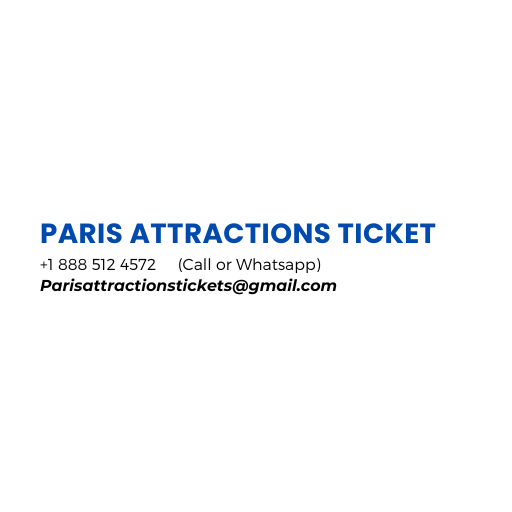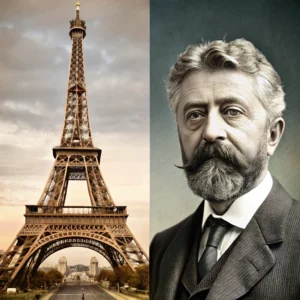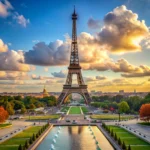The Eiffel Tower is not only one of the most recognizable monuments in the world but also a symbol of innovation, engineering brilliance, and French culture. Standing tall at 330 meters (1,083 feet), it has become a global icon of romance and architectural marvel. However, this extraordinary structure has a rich history, full of intrigue, challenges, and accomplishments. In this blog, we will explore the history of the Eiffel Tower, from its initial concept to its transformation into one of the most visited monuments in the world.
The Origins of the Eiffel Tower
Who Was Behind the Eiffel Tower’s Creation?
The Eiffel Tower was the brainchild of Gustave Eiffel, a French civil engineer whose vision and determination brought this iconic structure to life. Commissioned for the 1889 Exposition Universelle (World’s Fair) to celebrate the centennial of the French Revolution, the tower was initially designed to showcase the advancements in engineering and the iron industry.
Gustave Eiffel’s company, which had already designed several bridges and viaducts, was selected to build the tower. Eiffel himself was not only the leader of the project but also a passionate advocate for the tower’s design, which was initially met with criticism.
The Design and Engineering of the Eiffel Tower
Eiffel’s design was revolutionary for its time. The tower is made of iron and features an open lattice structure, making it both lightweight and strong. At the time of construction, it was the tallest man-made structure ever built, surpassing the Washington Monument in the United States. Eiffel’s innovative use of iron allowed the structure to be both flexible and stable, an important characteristic given its height.
Eiffel himself was heavily involved in the tower’s construction, personally overseeing the project and making adjustments to ensure its success. The design was based on the principle of using minimal material for maximum strength, a concept that was groundbreaking at the time.
The Construction of the Eiffel Tower
How Was the Eiffel Tower Built?
The Eiffel Tower’s construction began in January 1887 and took just over two years to complete, finishing in March 1889. Despite some public opposition, Eiffel and his team persevered, and the tower was completed on time and within budget. The construction process was incredibly challenging, as the structure was so large and complex.
The tower was built using more than 18,000 individual iron parts, all held together by 2.5 million rivets. Over 300 workers were employed on the project, and remarkably, only one person died during construction, a testament to the careful planning and innovative techniques used.
The Controversy During Construction
When the Eiffel Tower was first proposed, many people in Paris, including famous artists and writers, were opposed to its construction. They criticized its industrial design and felt that it would be an eyesore in the center of Paris. One of the most famous protests was the Protests of the Eiffel Tower in 1887, where 300 prominent Parisians signed a petition denouncing the project.
Despite these protests, the tower was built, and the initial public reaction changed over time. As it neared completion and was finally unveiled at the 1889 World’s Fair, people began to appreciate its beauty and the feat of engineering it represented. Today, the Eiffel Tower is regarded as one of the most stunning architectural wonders in the world.
The Eiffel Tower’s Evolution Over Time
Early Uses and Modifications
At first, the Eiffel Tower was not universally loved. It was intended to be temporary, set to be dismantled after 20 years following the World’s Fair. However, its usefulness became apparent over time, especially during the development of radio transmission. In 1910, the tower was used as an antenna for the first time, marking the beginning of its continued relevance in telecommunications.
In 1914, during World War I, the Eiffel Tower played a crucial role in intercepting enemy communications, further cementing its place in modern history.
The Tower’s Impact on French Culture
Over the years, the Eiffel Tower has become an enduring symbol of French culture. It represents Parisian elegance, the spirit of the industrial revolution, and the artistic soul of the city. It has been featured in countless films, paintings, and photographs, symbolizing the beauty of Paris to the world. Today, millions of tourists flock to Paris each year to see the Eiffel Tower, and its image is synonymous with romance, art, and innovation.
The Eiffel Tower’s Role in Communications
How Did the Eiffel Tower Contribute to Radio and Television?
The Eiffel Tower was not just a feat of architectural engineering—it also played a significant role in the development of radio and television. In 1898, the tower was used to transmit radio signals, marking the beginning of its use for telecommunications. By the early 20th century, it became a key location for radio broadcasts, especially for military communication during World War I.
In 1921, the Eiffel Tower was involved in one of the first radio broadcasts from Paris, and by 1935, it began transmitting television signals. This innovation helped cement the Eiffel Tower’s role in modern technology, alongside its architectural fame.
The Eiffel Tower as a Tourist Attraction
When Did the Eiffel Tower Become a Major Tourist Destination?
Since its opening to the public in 1889, the Eiffel Tower has remained one of the most visited monuments in the world, drawing approximately 7 million visitors each year. The tower’s observation decks offer breathtaking panoramic views of Paris, attracting tourists and locals alike. Over the years, it has undergone numerous renovations and upgrades, ensuring its continued safety and beauty.
The Eiffel Tower became increasingly popular as a tourist destination in the 20th century, especially after the introduction of elevators to the observation decks, making it accessible to a wider audience. Today, it is not just a monument but a full-fledged attraction with restaurants, shops, and immersive experiences for visitors.
Iconic Eiffel Tower Events
The Eiffel Tower has been at the center of various events, from New Year’s Eve celebrations to the annual light show that illuminates the tower in different colors. Special events such as the Tour de France passing nearby and temporary art installations add a sense of magic and excitement to the experience of visiting the tower. It’s also been used for national celebrations, including the Bastille Day fireworks and the 2000 New Year’s Eve celebration marking the new millennium.
Modern-Day Eiffel Tower
The Eiffel Tower as a Modern Tourist Attraction
In the 21st century, the Eiffel Tower continues to stand as a symbol of Paris. It hosts special events, celebrations, and light shows and is often illuminated in different colors to commemorate various global events. The Eiffel Tower has become synonymous with Paris, and it plays a central role in defining the city’s charm and allure.
Renovations and Upgrades
Over time, the Eiffel Tower has been renovated and maintained to preserve its safety and aesthetic appeal. The most notable changes include the installation of new elevators and enhanced visitor facilities, as well as ongoing painting and structural repairs to maintain its iconic appearance. These efforts have ensured the Eiffel Tower remains a safe, accessible, and visually stunning landmark for millions of visitors every year.
12 People Also Ask About the History of the Eiffel Tower
1. Who built the Eiffel Tower and why?
The Eiffel Tower was designed by Gustave Eiffel, a French engineer, for the 1889 World’s Fair to celebrate the centennial of the French Revolution.
2. How long did it take to build the Eiffel Tower?
The Eiffel Tower took about 2 years, 2 months, and 5 days to complete, starting in January 1887 and finishing in March 1889.
3. Why was the Eiffel Tower built?
The Eiffel Tower was built as the centerpiece for the 1889 Exposition Universelle (World’s Fair) in Paris to celebrate the centennial of the French Revolution.
4. How tall is the Eiffel Tower?
The Eiffel Tower stands at a height of 330 meters (1,083 feet), making it the tallest structure in Paris.
5. Was the Eiffel Tower supposed to be permanent?
Originally, the Eiffel Tower was meant to be a temporary structure, but due to its usefulness as a radio tower, it was kept and became a permanent landmark.
6. How much iron was used to build the Eiffel Tower?
The Eiffel Tower is made from over 18,000 individual iron pieces and weighs approximately 10,100 tons.
7. Why did people hate the Eiffel Tower at first?
Many people criticized the Eiffel Tower for its industrial design and believed it would spoil the beauty of Paris. Over time, however, it gained appreciation.
8. How many people visit the Eiffel Tower each year?
The Eiffel Tower attracts about 7 million visitors each year, making it one of the most visited monuments in the world.
9. Is the Eiffel Tower illuminated at night?
Yes, the Eiffel Tower is beautifully illuminated at night and sparkles for five minutes every hour after sunset.
10. Why is the Eiffel Tower a symbol of Paris?
The Eiffel Tower symbolizes the city’s spirit of innovation, culture, and elegance. It has become synonymous with romance and artistic expression.
11. How long did it take to paint the Eiffel Tower?
It takes about 15 to 18 months to repaint the Eiffel Tower, and it is done every seven years to maintain the structure.
12. Was the Eiffel Tower the tallest building in the world?
When it was completed in 1889, the Eiffel Tower was the tallest man-made structure in the world until the completion of the Chrysler Building in New York in 1930.
Conclusion
The Eiffel Tower has a rich history full of controversy, innovation, and cultural significance. From its humble beginnings as a temporary structure to becoming one of the most visited monuments in the world, the Eiffel Tower has earned its place as a symbol of Paris and engineering excellence. Whether you’re admiring it from a café or standing on its observation decks, the Eiffel Tower remains a testament to the vision and creativity of Gustave Eiffel and the enduring spirit of the city of Paris.



